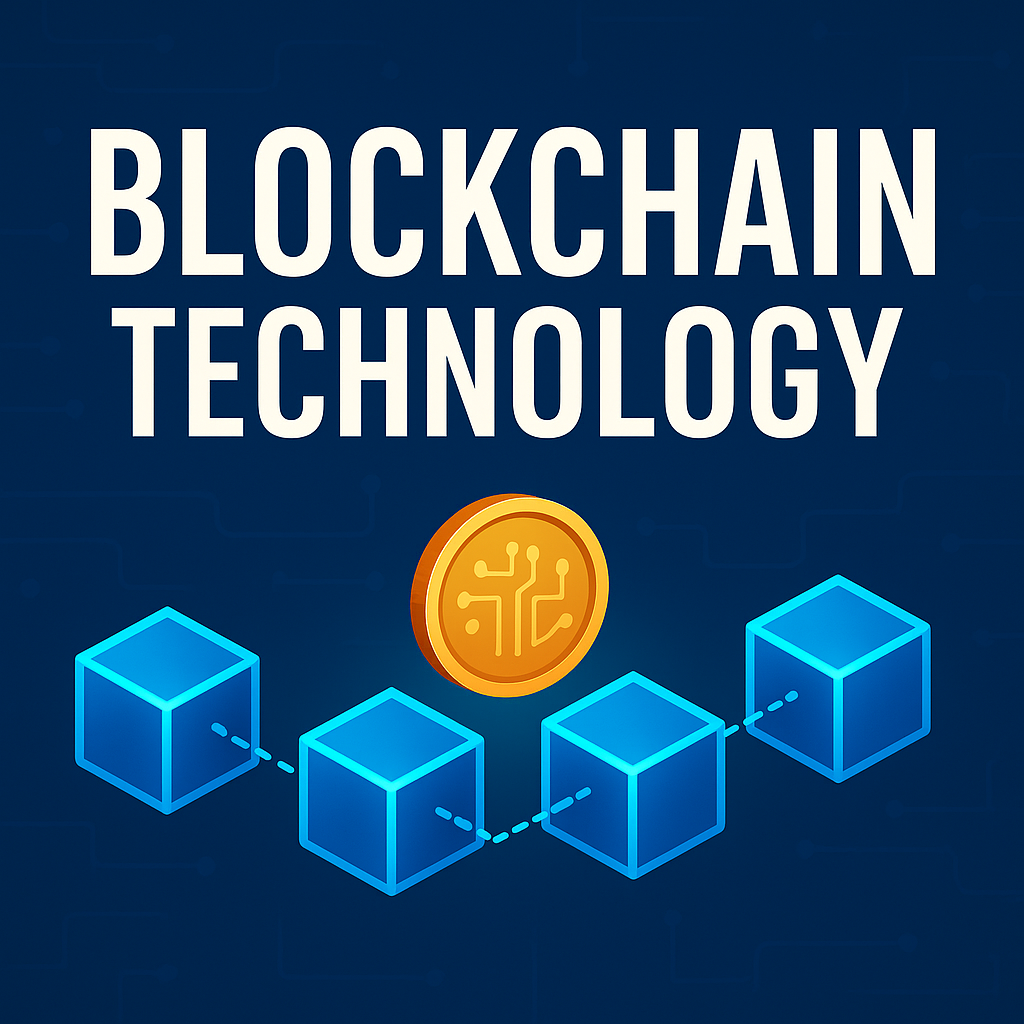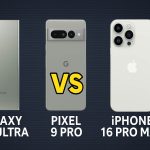Blockchain Technology Explained: How It Works, Why It Matters & What the Future Holds
In the fast-moving digital world, where security, transparency, and decentralization are becoming essential, blockchain technology stands as one of the most revolutionary innovations of the 21st century. Initially recognized as the underlying structure behind Bitcoin, blockchain has since evolved far beyond cryptocurrencies.
This comprehensive blog explores everything you need to know about blockchain—from its origins and how it works, to real-world use cases, industries being transformed, future trends, and much more.
Table of Contents
- What is Blockchain Technology?
- History and Evolution of Blockchain
- How Does Blockchain Work?
- Key Features of Blockchain
- Types of Blockchain
- Blockchain vs Traditional Databases
- Real-World Use Cases of Blockchain
- Industries Being Transformed by Blockchain
- Blockchain in Cryptocurrency
- Blockchain and Smart Contracts
- Benefits of Blockchain Technology
- Challenges and Limitations
- The Future of Blockchain Technology
- Frequently Asked Questions (FAQ)
- Final Thoughts

1. What is Blockchain Technology?
Blockchain is a decentralized, distributed digital ledger that stores data across many computers. Each entry or “block” of data is linked with others, forming a secure and unchangeable chain—hence the name, “blockchain.”
In simple terms, it’s a database that no one can tamper with, and everyone can verify. This technology eliminates the need for intermediaries, making transactions more secure and transparent.
2. History and Evolution of Blockchain
The concept of blockchain was first introduced in 2008 by an individual (or group) using the pseudonym Satoshi Nakamoto, who created Bitcoin. But the core idea of decentralized data storage goes back to 1991.
- 1991: Stuart Haber and W. Scott Stornetta introduce the first idea of a chain of blocks to timestamp digital documents.
- 2008: Satoshi Nakamoto publishes the Bitcoin whitepaper.
- 2009: Bitcoin is launched, the first real-world blockchain application.
- 2015: Ethereum launches smart contracts, taking blockchain beyond finance.
- 2020s: Blockchain adoption in supply chain, healthcare, voting systems, and NFTs.
3. How Does Blockchain Work?
Blockchain involves three main components:
a. Blocks
Each block contains:
- Data (e.g., transaction details)
- A hash (unique identifier)
- Hash of the previous block (linking blocks together)
b. Nodes
Every participant in the blockchain network is a node. Each has a copy of the entire blockchain and validates transactions.
c. Consensus Mechanisms
To add a new block, nodes must agree. This is achieved through:
- Proof of Work (PoW)
- Proof of Stake (PoS)
- Delegated Proof of Stake (DPoS)
- Proof of Authority (PoA)
These mechanisms ensure that only valid data is added.
4. Key Features of Blockchain
- Decentralization: No central control, all participants share data.
- Transparency: Everyone sees the same data in real time.
- Immutability: Once recorded, data cannot be altered.
- Security: Cryptographic techniques make data tamper-proof.
- Consensus Algorithms: Prevent double spending and fraud.
5. Types of Blockchain
- Public Blockchain: Open to everyone (e.g., Bitcoin, Ethereum)
- Private Blockchain: Controlled by one organization (e.g., Hyperledger)
- Consortium Blockchain: Controlled by a group of organizations
- Hybrid Blockchain: Mix of public and private access
Each type serves a different business need and use case.
6. Blockchain vs Traditional Databases
| Feature | Blockchain | Traditional Database |
|---|---|---|
| Control | Decentralized | Centralized |
| Data Integrity | Immutable | Alterable |
| Transparency | High | Low |
| Security | Very Secure | Vulnerable to breaches |
| Speed | Slower (more secure) | Faster |
7. Real-World Use Cases of Blockchain
- Supply Chain Management: Track goods in real-time, reduce fraud.
- Healthcare: Secure patient data, streamline records.
- Voting Systems: Tamper-proof digital elections.
- Education: Verifiable academic credentials.
- Real Estate: Smart contracts for buying/selling property.
8. Industries Being Transformed by Blockchain
- Banking & Finance: Instant cross-border payments, DeFi
- Healthcare: Secure sharing of patient data
- Retail: Track product authenticity
- Logistics: Transparent supply chains
- Entertainment: Royalty tracking and NFTs
- Government: Transparent public records and e-voting
- Cybersecurity: Protection against data tampering
9. Blockchain in Cryptocurrency
Cryptocurrencies like Bitcoin, Ethereum, Solana, Cardano, and Polkadot use blockchain to verify transactions without needing a centralized authority.
- Bitcoin: Store of value
- Ethereum: Smart contracts and dApps
- Stablecoins: Pegged to fiat, used in daily transactions
DeFi (Decentralized Finance) platforms are eliminating banks and brokers from financial services using blockchain.
10. Blockchain and Smart Contracts
Smart contracts are self-executing agreements coded on the blockchain. Once conditions are met, the contract automatically executes.
Use cases:
- Insurance claims
- Real estate sales
- Supply chain automation
- Legal agreements
Smart contracts reduce fraud, cost, and execution time.
11. Benefits of Blockchain Technology
- Security: End-to-end encryption
- Trustless Transactions: No intermediaries
- Transparency: Viewable by all participants
- Cost Efficiency: Reduces overhead
- Speed: Real-time updates
- Traceability: Easily track data or goods
12. Challenges and Limitations
Despite its potential, blockchain is not perfect:
- Scalability: Slower than traditional databases
- Energy Consumption: PoW blockchains like Bitcoin use massive energy
- Regulation: Lack of consistent laws worldwide
- Interoperability: Blockchains need better communication
- Public Perception: Still associated mostly with crypto scams
These challenges are slowly being addressed by developers and regulators.
13. The Future of Blockchain Technology
a. Blockchain 4.0
The next generation of blockchain will be faster, scalable, and more user-friendly.
b. Integration with AI & IoT
Imagine smart contracts working with AI bots and IoT devices to automate factories or smart homes.
c. Government Adoption
Several countries are launching CBDCs (Central Bank Digital Currencies) using blockchain.
d. Green Blockchain Solutions
Newer protocols like Proof of Stake are eco-friendly alternatives to Bitcoin’s PoW.
e. Blockchain-as-a-Service (BaaS)
Big companies like Amazon, Microsoft, and IBM now offer BaaS platforms.
14. Frequently Asked Questions (FAQ)
Q1: Is blockchain secure?
Yes, blockchain is one of the most secure technologies due to its cryptographic nature and decentralized structure.
Q2: Can blockchain be hacked?
It’s extremely difficult to hack a blockchain, especially public ones like Bitcoin and Ethereum.
Q3: Is blockchain only for cryptocurrency?
No. It’s used in healthcare, real estate, education, logistics, voting, and more.
Q4: Will blockchain replace traditional banking?
Not entirely, but it will revolutionize how banking works through DeFi and CBDCs.
Q5: What is a smart contract?
A smart contract is an automated agreement that runs on the blockchain.
15. Final Thoughts
Blockchain technology is much more than just the backbone of cryptocurrencies. It’s a paradigm shift in how we manage data, ensure security, and build trustless systems. From governments to startups, industries are investing in blockchain to innovate, reduce costs, and enhance transparency.
While there are still challenges, the future of blockchain looks bright—more sustainable, scalable, and integrated with emerging technologies like AI, 5G, and quantum computing.
Whether you’re a developer, investor, entrepreneur, or just curious, understanding blockchain is essential for thriving in the digital era of 2025 and beyond.


